Two Levels of Change (project and organisation)
Project level
A definition of change at the project level is highlights the people side
"...application of a structured process and set of tools that lead the people side of change to achieve the desired outcome..."
Prosci as quoted by Bryan Carey, 2024
Some example of project benefits include:
- increasing revenue because of the project
- reducing operational costs because of the project, etc.
Organisational level
In constrast, change management at the organisational level can be defined as:
"...- leadership competency for enabling change within an organisation
- a strategic capability designed to increase change capacity and responsiveness..."
Some examples of organisational benefits include:
- improved behavioural performance of staff
- improved operational efficiencies and sales revenue
- improved customer experience, etc
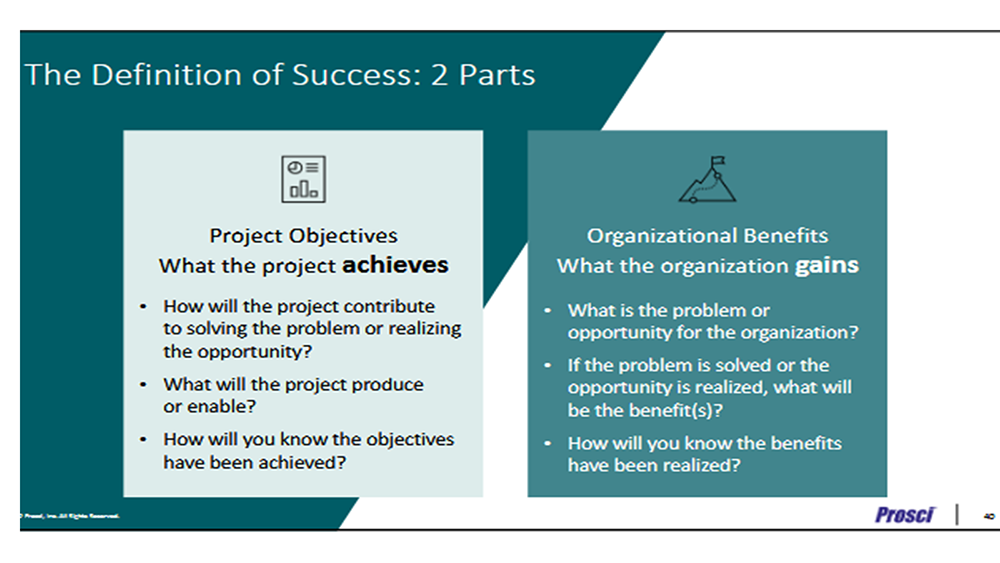
(source: Bryan Carey, 2024)
Communication, etc
During change initiatives, people and their roles are changing from their current state to transitional and then future states. This needs to be communicated effectively to all impacted stakeholders. Everyone needs to consider their role in achieving the expected outcomes, etc; if this doesn't happen effectively, it can lead to resistance and reduce the chance of a successful change outcome.
Generally, people like to hear from senior management about why they are changing and then from their immediate supervisor the impact on them.
If the organisation has a history of failed change projects and/or underachieved improvements and/or it is not what staff expected or hoped for, etc, future change initiatives will suffer.are you
NB Both the technical and people sides need to work together for successful change management. This increases the chance of meeting change goals around 88% of the time, compared with around 30% of poorly managed change; even incremental changes can improve performance by 3 times (see diagram below).
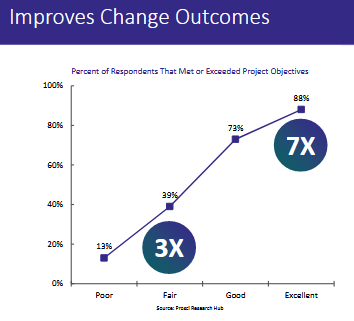
(source: Bryan Carey, 2024)
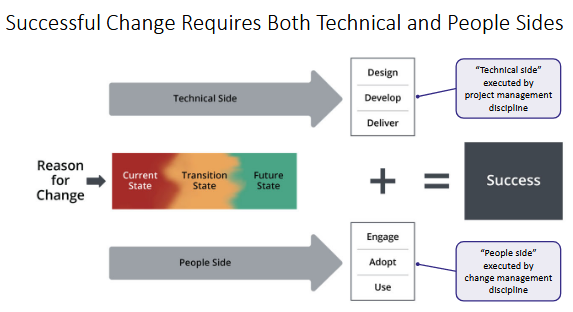
(source: Bryan Carey, 2024)
On the people side, change leaders need to determine whether people generallyare adapting the change, engaged, etc in the transition to the future state.
The people side of change closes the gap between the project and the organisation.
NB Attendees at a webinar (early 2024) were asked to use one word to describe change management; people was the dominant word used to describe change management:
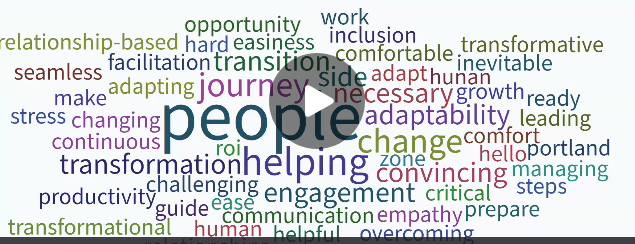
(source: Bryan Carey, 2024)
One of the top trends predicted for change management over the next 5 years is increasing emphasis on the human side of change (Tim Creasey, 2024)
The people side is incorrectly described as the soft stuff. However, like project management, it is based upon research, frameworks, tools, techniques, etc; it is a discipline with systems, processes, rules, etc.; it is more than just training, ie people need to know why are changing; it involves moving people from a current state through a transitional state to a future state: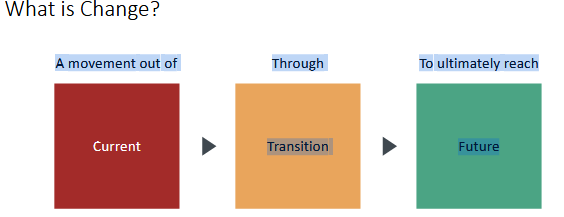
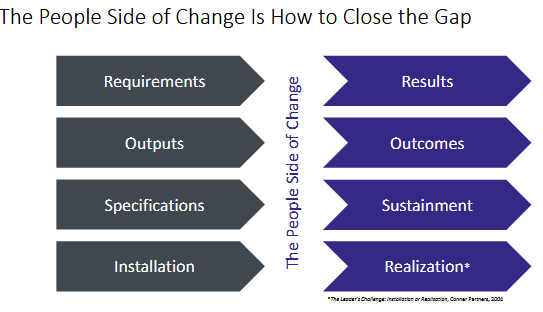
(source: Bryan Carey, 2024)
Listening and being empathetic are important skills for change practitioners
"...change has become more complex, bigger, faster and more interconnected..."
Bryan Carey, 2024
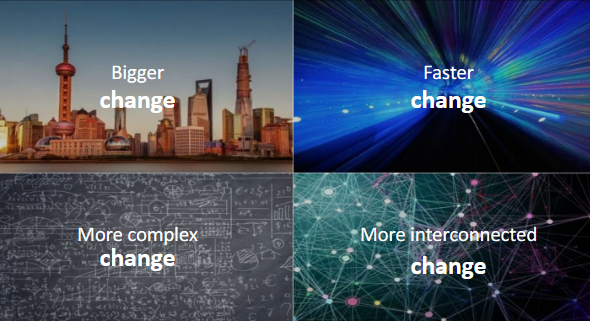
(source: Bryan Carey, 2024)
In mergers and acquisitions (M &A), a gap analysis between the parties is required to ascertain what they have and what is lacking for a successful M & A, eg processes, systems, expertise, knowledge, skills, experience, personnel, leadership, management, etc.
